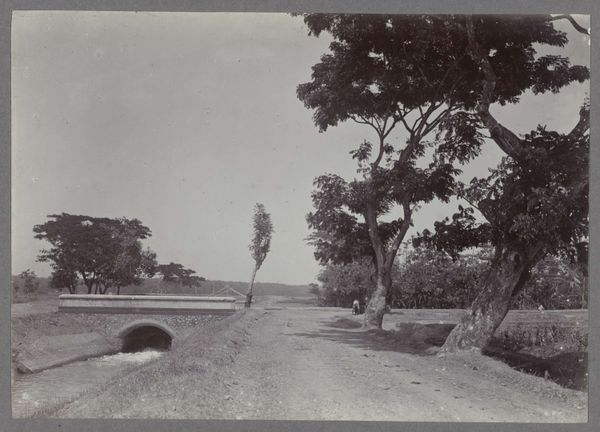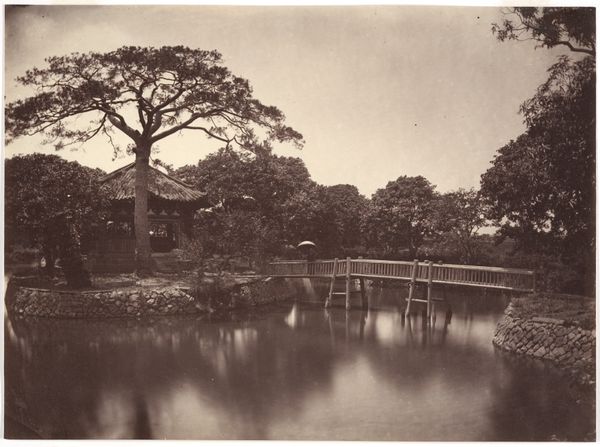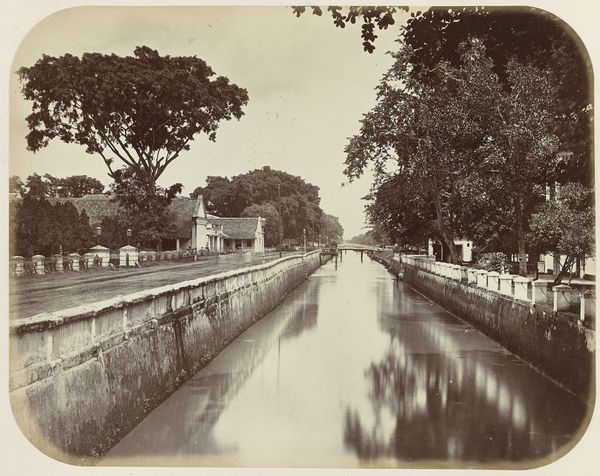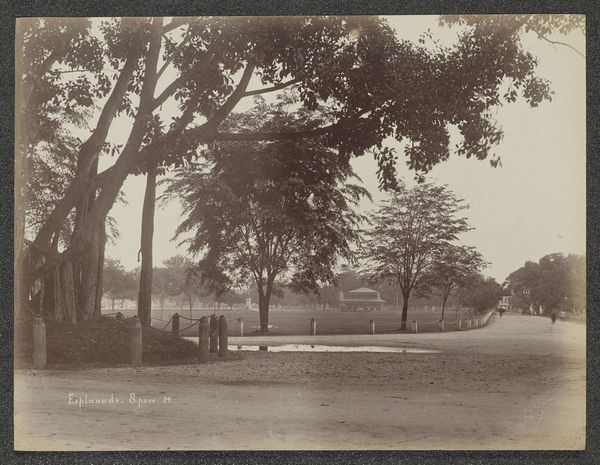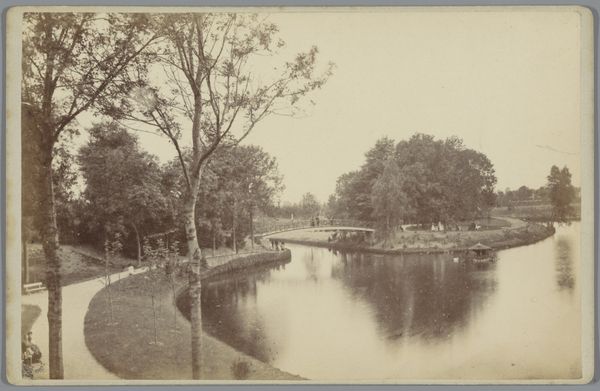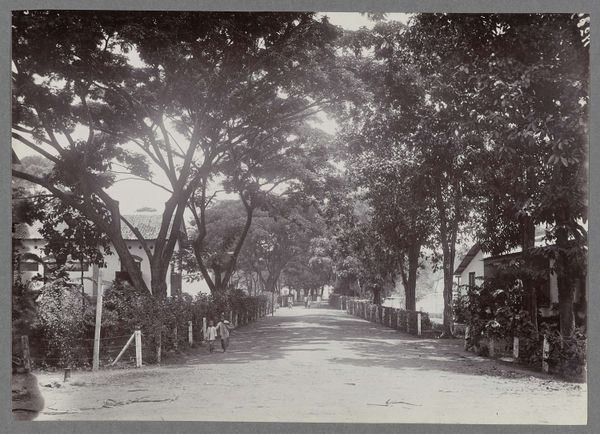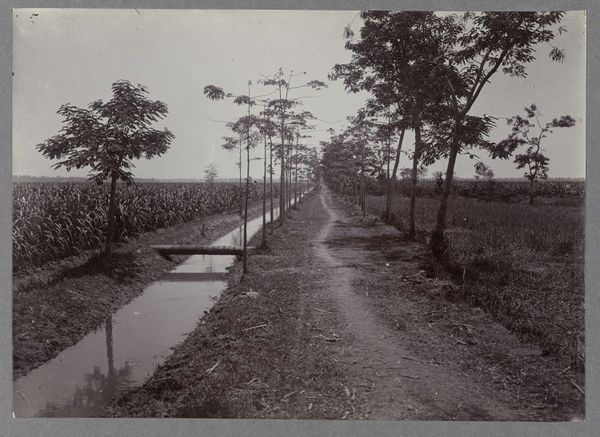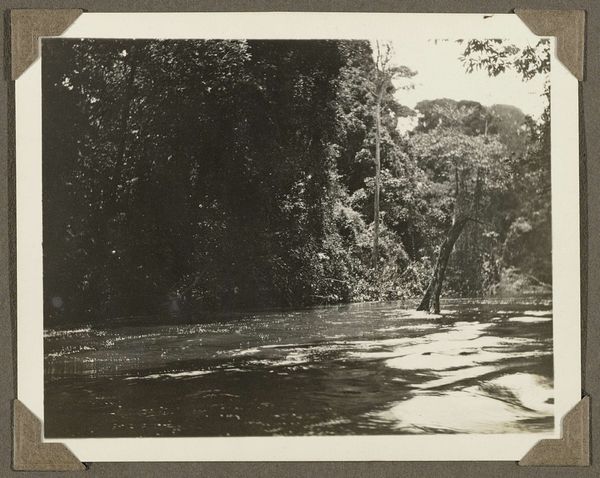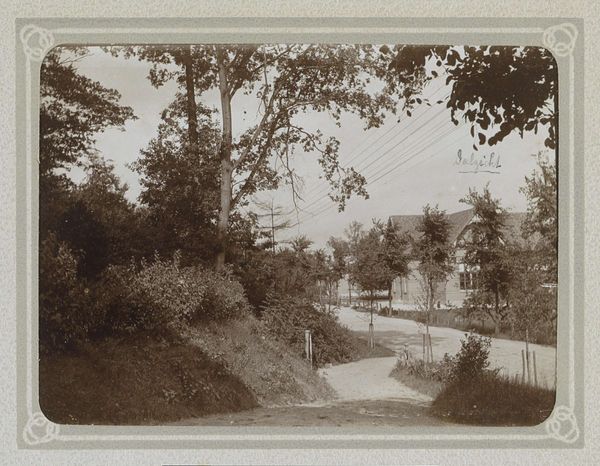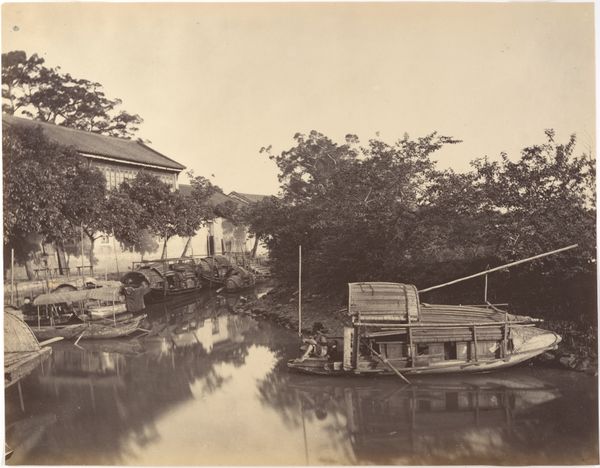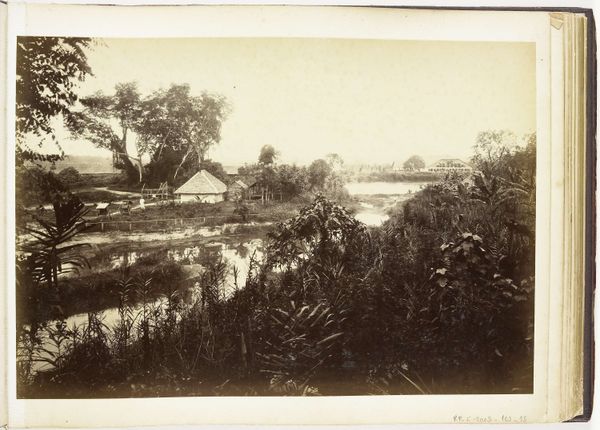
print, photography
# print
#
landscape
#
photography
#
natural palette
#
realism
Dimensions: height 123 mm, width 173 mm
Copyright: Rijks Museum: Open Domain
Curator: Welcome. We're standing before an anonymous print titled "Brug over een kanaal," or "Bridge over a Canal," created sometime between 1900 and 1910. The print is rendered in muted greyscale. Editor: My immediate impression is one of serene tranquility—a snapshot of everyday life almost entirely absent of dramatic visual flourishes. Curator: Agreed. The composition relies on a straightforward perspectival structure. The bridge itself serves as a clear horizontal anchor. Note how the reflections in the water echo the solidity of the physical bridge, further stabilizing the image. Editor: Yes, but what about the social landscape? Look closer—those aren't just trees lining the canal bank. Those are people gathered in the shade, engaging in a communal activity—almost obscured by the natural setting. This invokes questions about colonialism, labor, and social stratification present during that period. Who is seen and unseen and why? Curator: Undoubtedly, those details invite such readings. But before ascribing motives of deliberate omission or pointed social critique, consider how effectively the tonal range creates depth. See how the artist uses contrasts—the dark silhouettes of trees against the brighter sky—to establish recession and atmospheric perspective. Editor: True, however, framing choices always embed power dynamics. What activities are rendered important through visual precedence versus being given secondary status within the photographic space? The composition itself serves as commentary. The large mass of tree foliage overwhelms the tiny, ambiguous gathering on the river bank. The landscape, at least ostensibly, appears valued more highly. Curator: But that tension between the constructed environment and the human presence also adds an undeniable dynamism to the picture. Without either, the image feels somehow…incomplete. Editor: And perhaps that "incompleteness" speaks to the lingering anxieties present as power structures begin subtly shifting near the turn of the century. This artwork prompts interesting discourse that resonates today. Curator: Indeed. Focusing on this artwork reveals the complexities embedded in landscape photography—even when ostensibly "neutral" or purely representational. Editor: Looking at "Brug over een kanaal" encourages a crucial expansion beyond aesthetic appreciation toward richer interpretations of history, representation, and social awareness.
Comments
No comments
Be the first to comment and join the conversation on the ultimate creative platform.
